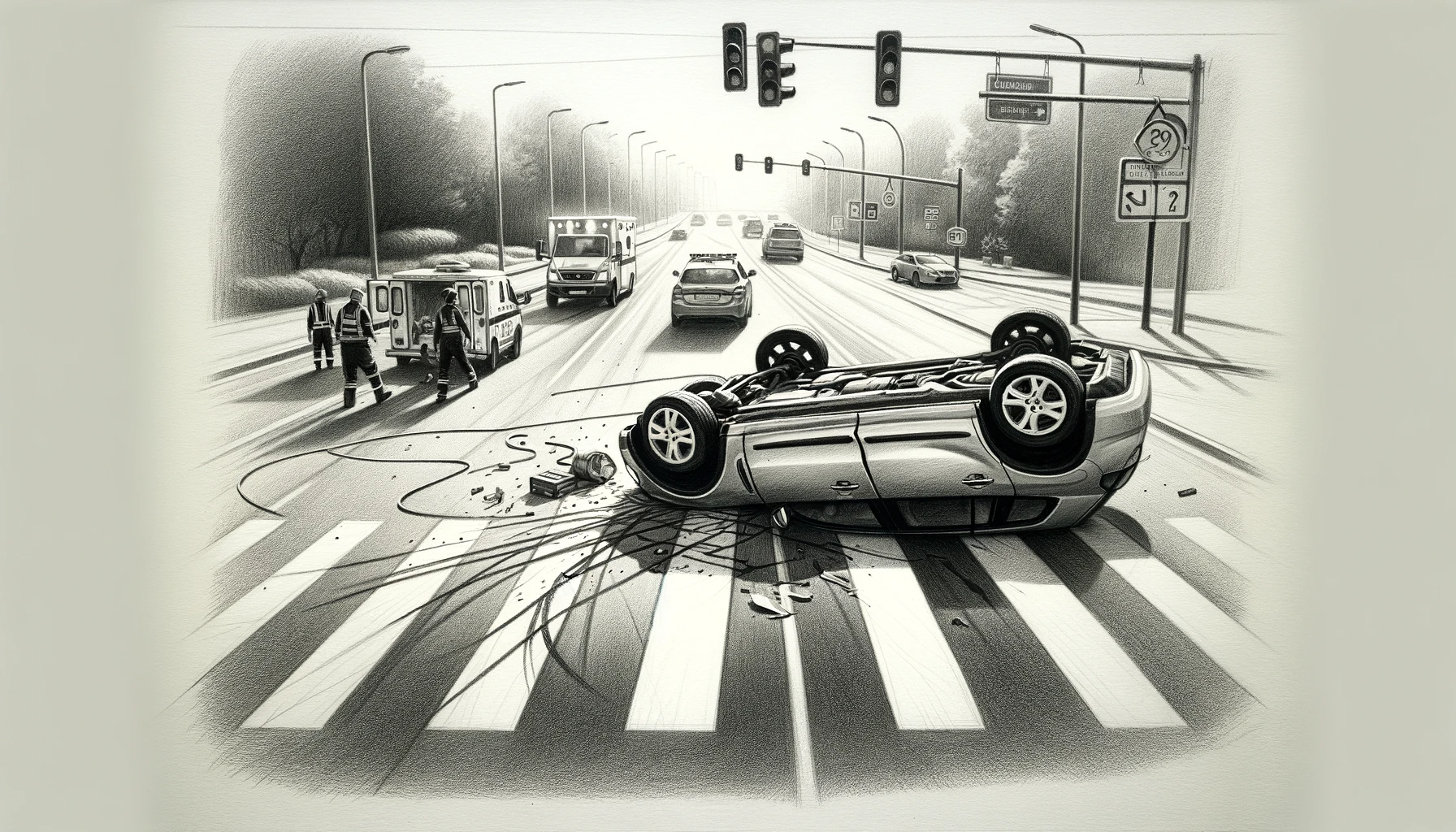Welcome to the third installment of our series, ‘The Anatomy of Common Accidents.’ Today, we’re exploring rollover accidents, a type of vehicle crash that can be especially dangerous. Missed our earlier posts in this series? Catch up on rear-end collisions here and side-impact crashes here.
If you’ve been in an accident and need assistance, Stillman & Friedland are here to help. Contact us at 615-244-2111 for a free consultation.
Understanding Rollover Accidents
Rollover accidents occur when a vehicle flips over onto its side or roof. This type of crash can result in severe injuries or even fatalities due to the violent nature of the accident. Factors contributing to rollovers include vehicle type, speed, driver behavior, and environmental conditions.
Why Are Rollover Accidents Hazardous?
Rollover accidents are particularly dangerous for several reasons:
- High Fatality Rate: They have a higher fatality rate compared to other types of crashes.
- Ejection Risk: Occupants are at risk of being ejected if seatbelts are not used.
- Severe Injuries: Even when restrained, passengers can suffer serious injuries due to the force and movement during a rollover.
Common Causes of Rollover Accidents
Understanding the causes is key to prevention:
- Tripping: This is when a vehicle’s tire hits a curb, pothole, or soft shoulder, causing it to flip.
- Speed: High speeds, especially around curves, increase the risk of a vehicle rolling over.
- Driver Behavior: Sudden maneuvers, overcorrection, or loss of control can lead to a rollover.
- Type of Vehicle: Taller, narrower vehicles like SUVs and pickups are more susceptible to rollovers due to their higher center of gravity.
Preventing Rollover Accidents
Here are some key measures to minimize the risk:
- Drive Cautiously: Reducing speed and avoiding abrupt steering movements can significantly lower the risk of a rollover, especially in larger vehicles or when driving through curves.
- Vehicle Maintenance: Regular checks on your vehicle’s tire pressure and condition can prevent unexpected blowouts or loss of control, two common precursors to rollovers.
- Load Vehicles Properly: Incorrectly loaded cargo, especially in taller vehicles, can shift the center of gravity, increasing the risk of a rollover. Ensure cargo is evenly distributed and within the vehicle’s load capacity.
- Use Caution on Rural Roads: These roads can be more likely to have the soft shoulders or uneven surfaces that can contribute to rollover crashes.
- Wear Seatbelts: This reduces the risk of ejection and serious injury in the event of a rollover.
What to Do After a Rollover Accident
If you’re involved in a rollover, follow these steps:
- Stay Calm: Take deep breaths and try to remain calm.
- Check for Injuries: Assess yourself and passengers for injuries before attempting to move.
- Exit Safely: If it’s safe to do so, carefully exit the vehicle.
- Call for Help: Contact emergency services immediately.
- Document the Scene: Take photos of the scene if you are able to do so safely.
- Seek Medical Attention: Even if you feel fine, some injuries are not immediately apparent.
- Contact Stillman & Friedland: Our team can provide the legal support you need following a rollover accident.
Conclusion
Rollover accidents are among the most severe crashes on our roads. Understanding their causes and taking preventive measures can save lives. Stay cautious, drive safely, and if you ever find yourself in a rollover, know that Stillman & Friedland is here to support you. Call our Nashville team at 615-244-2111 for a free, confidential consultation. You can also reach out via our live chat or online contact form.
Stay safe on the roads, Nashville. Join us next time as we continue to explore ‘The Anatomy of Common Accidents.’
Because we care…
Stillman and Friedland







